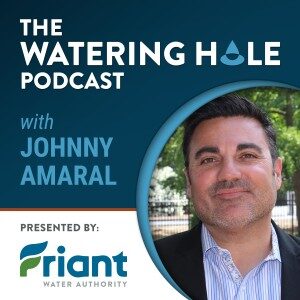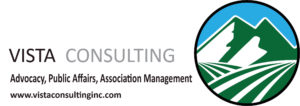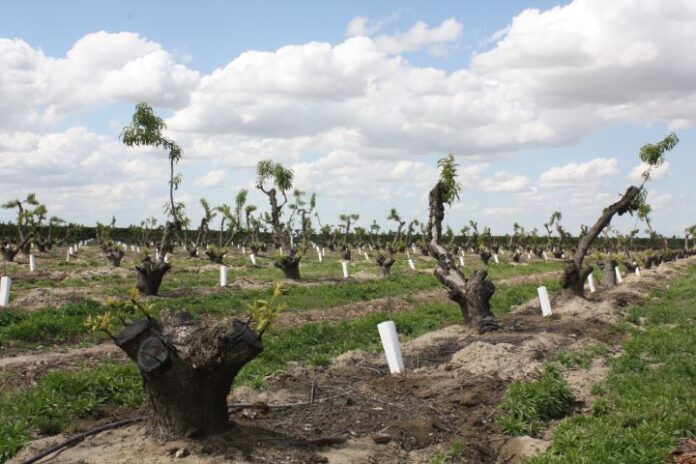 The Kaweah Delta Water Conservation District held its Tuesday, March 1, 2022 meeting at its Farmersville headquarters and online with the non-Zoom GoToMeetings. Members of the public can attend the meeting but the KDWCD boardroom can get a little tight space wise so the online option works well.
The Kaweah Delta Water Conservation District held its Tuesday, March 1, 2022 meeting at its Farmersville headquarters and online with the non-Zoom GoToMeetings. Members of the public can attend the meeting but the KDWCD boardroom can get a little tight space wise so the online option works well.
The following is my opinion and not those of any sponsor or coffee shop buddy. I think the open session portion of all government meetings in California should have the online option. The need for directors, staff, consultants and interested parties to meet together is a powerful claim on preserving publicly available locations. I’m not advocating to do away with that, but this is California, this is the 21st Century and at the very least an audio link should be provided. Although I believe the cost and availability of internet would allow for a visual link as well.
option. The need for directors, staff, consultants and interested parties to meet together is a powerful claim on preserving publicly available locations. I’m not advocating to do away with that, but this is California, this is the 21st Century and at the very least an audio link should be provided. Although I believe the cost and availability of internet would allow for a visual link as well.
Kaweah Delta does a good job of this with its non-Zoom GoToMeetings link. The Exchange Contractors have an audio link and a separate video that shows documents. The Tehama Colusa Canal Authority does an audio only link. These entities all run a fine meeting and the public can be informed if it chooses to. Before you jump to any conclusion I don’t want to spend $4-5 per gallon as my only motivation (I don’t, I don’t want to spend that money on gas – my boss won’t give me an expense account) the benefit of time and transparency of making public meetings truly public can greatly help communication and understanding. This isn’t meant to be an exhaustive apology for universal online meeting.
The Meeting
There is a chance of precipitation towards the end of this week. That was the first statement I heard. Chairman Don Mills called the meeting to order at 9:00am and quorum was established, there was no public comment and the consent calendar was approved.
General Manager Mark Larsen presented the board with an update on the district’s investment policy. He said there are a lot of laws from Sacramento governing public entity investment but the first priority is to protect the principal. The next consideration is maintaining a certain amount of liquidity. The district has to have reasonable access to the funds for its needs. And finally the investment must be secured with an insured fund, if I understood correctly. Attorney Aubrey Mauritson has gone over the details and it passed her approval. Kaweah Delta maintains three separate accounts – one for everyday costs, one for backup and one for longer-term investments for return. Mills said the Local Agency Investment Fund LAIF just isn’t paying the interest to keep it an attractive place to park money. Twenty years ago I heard boards express concern the legislature could seize LAIF this money if they want to overspend. Just as I wrote this Larsen said this has happened.
investment policy. He said there are a lot of laws from Sacramento governing public entity investment but the first priority is to protect the principal. The next consideration is maintaining a certain amount of liquidity. The district has to have reasonable access to the funds for its needs. And finally the investment must be secured with an insured fund, if I understood correctly. Attorney Aubrey Mauritson has gone over the details and it passed her approval. Kaweah Delta maintains three separate accounts – one for everyday costs, one for backup and one for longer-term investments for return. Mills said the Local Agency Investment Fund LAIF just isn’t paying the interest to keep it an attractive place to park money. Twenty years ago I heard boards express concern the legislature could seize LAIF this money if they want to overspend. Just as I wrote this Larsen said this has happened.
Aaron Williamson and Mark Shelton from Valley Strong Credit Union were present to answer the board’s questions about moving some money into their fund. Larsen said that middle account isn’t paying well. Shelton said Valley Strong originated in Bakersfield supplying investments for the Kern County Teachers Retirement. Valley Strong has expanded its area throughout the Southern San Joaquin Valley. He said most banks do a market survey and evaluate their lending demands. Credit unions are shareholder/member driven, non-profit and put the consumer first. Banks are based on returning income on investments. It’s subtle but it’s not at the same time. I can say I much prefer my credit union’s attitude towards me than any bank I’ve done business with.
I think the amount Kaweah Delta is looking to invest is $5 million. Larsen said adopting the updated investment policy would allow moving the $5 million to Valley Strong. The board agreed and adopted both the updated policy and the move to Valley Strong. There was a motion to adjourn after they realized they’d increased their return from 1/10th of percent to a full one percent.
Water Supply
Water Master Vic Hernandez reported on water supplies saying getting the Airborne Snow Survey completed has been a challenge this past week. The Kaweah River watershed is sharing this frustration with the Kings River watershed due in part to restricted air space for military operations. There is a storm system forecasted for this weekend the need for the data to be incorporated in time for the March allocations.
Hernandez said the fires in the San Joaquin River watershed may have contributed to a 400,000 a/f loss due to various reasons. Larsen said one knows for sure why. It could be there was more evaporation or perhaps increased percolation. There has been fires in the Kaweah watershed that could also adversely impact runoff. Engineer Dennis Keller said runoff is also greatly dependent on temperature. Warmer weather creates faster runoff because the melted snow saturates the ground surface quicker allowing a greater amount of liquid to roll downhill before a night time freeze.
CVP
There is concern about a call on the Friant Division by the US Bureau of Reclamation that may take place in June said Director Chris Tantau who also represents Kaweah Delta on the Friant Water Authority board. This isn’t carved in stone yet but the Bureau is reserving 100,000 a/f just in case. One of the consequences of this could be impacting carryover held by the federal Central Valley Project contractors at Millerton Lake. Millerton Lake can only hold 500,000 a/f at a time maximum. However, releases from Friant Dam keep it lower to make room for flood space. The board ratified its Class One CVP supplies and that was the end of that discussion.
Land Survey
There is a survey proposed that needed an exemption from CEQA. Engineer Larry Dotson gave this presentation and the board agreed.
Friant
Larsen said the Friant Kern Canal repairs have started. Hooray. He said Johnny Amaral has become the new COO at the Friant Water Authority and everyone agreed this is a good move. Someone asked Tantau how the canal repair funding is coming along. He said the slug of state and federal infrastructure money looks very promising.
Hannah Ranch
Kaweah Delta is constructing a recharge facility at the Hannah Ranch on the eastside of the Valley. Keller said the culverts and metering vault have been completed. He doesn’t think the possible rain later this week will hamper construction. There are some complicated permitting required by Caltrans. KWDCD has a “parent” permit coming within the week and the contractor has to secure an additional permit. Keller said there is some confusion on the traffic plan. Caltrans approved a traffic control plan and now it’s saying Tulare County has buy off on this as it has no authority over county roads. So, the contractor now has to get a permit from the county.
Next Larsen said the preferred route to move dirt for the project would include crossing Rocky Hill Inc. property. Rocky Hill wants a licensing agreement and the board agreed. There will be some improvements to the existing roadbed that will reduce dust and reinforce the road.
The board also approved a progress payment of about $75,000 to the contractor doing work on the check structure. There is a timeline concern that can impact the grant payments. Permits and grants have expiration dates. Certain construction milestones have to be reached to keep everything running smoothly with permits and payments.
Land Repurposing
The California Department of Conservation has a multi-benefit land repurposing program. Due to reduced surface and groundwater supplies (don’t get me started) farmland is going to have to be retired. The State doesn’t like to call it retirement, it prefers the gentler term “repurposing”. The San Joaquin Valley Water Blueprint includes an economic study by Dr. David Sunding and Public Policy Institute of California has a study that shows maybe a million acres or more will have to be removed from ag production in the Valley due to the Sustainable Groundwater Management Act.
Larsen said there is a grant from the Department of Conservation to help for fallowing land. He said this funding will allow assembling a team to consider the best use of transitioning this fallowed land – recharge, habitat, solar and such. The Sequoia Riverlands Trust is part of this team representing the conservation portion required by the grant and the area GSAs are also participating.
Larsen said after much consideration Kaweah Delta is the best entity to file the grant application. He was asked how much the grant was and said $10 million per subbasin. The board approved with Director Mike Chrisman abstaining since he’s also on the SRT board.
Next Larsen said a memorandum of understanding needs to be approved. He said this is broadly focused and the MOU can include many signatures from many organizations. Having the MOU in place will strengthen the grant application. The Mid Kaweah GSA approved and the East Kaweah GSA is waiting for its lawyer to make a legal review. Mauritson suggested approval based on GM and attorney approval should any minor changes take place. The board was OK with this and approved the MOU.
Larsen said the grant application is complicated and Provost & Pritchard would have the expertise to better write the application. P&P is asking $18,000 to do the paperwork. There is an April deadline to turn in the application. The GSAs within the Kaweah Subbasin are expected to chip in on this cost.
Bigger Lake
The Lake Kaweah Enlargement Project almost got shut down due to an endangered elderberry beetle. As it turns out this is not one of the endangered bug species. I think Mills said it best when he pointed out there was a family drift on the mother’s side. The land the questioned beetle lived on is now back in play. This includes rangeland with oak trees. If you’ve never seen the beauty of a mature Valley Oak you’re missing one of God’s magnificent creations. He placed these trees in grassland and I believe this is an earthly glimpse of heaven.
Anyway, the board agreed to a master service agreement with Sequoia Riverlands and Mills pointed out all the cattle to graze on this land have been trained not to step on burrowing owls. A grazing lease with Jackson Griggs was approved with management criteria included. They don’t want overgrazing that could cause livestock to gnaw on something it shouldn’t or under graze causing fire hazard.
SGMA
The Greater Kaweah GSA report was next on the agenda. GKGSA GM Eric Osterling said there is $7.6 million grant coming to the GSA to help fund needed work. He said he had a meeting with DWR personnel about the determination on the Groundwater Sustainability Plan. It was ruled incomplete and the GKGSA is working on getting its response together. Osterling said DWR was cooperative and he sounded optimistic about developing an acceptable modification to the GSP within the deadline. He said interconnected streams and subsidence were two of the issues DWR was concerned with. There are other plans that set an example of what can be qualified.
There are policy related matters that might not make it on the dashboard being developed for the GKGSA. Osterling said Land IQ is helping with the dashboard and he said to expect something by May. Which is exciting. Mills said SGMA doesn’t include legacy subsidence prior to 2015 and he asked Osterling how the revisions of the GSP can differentiate that. He was also asked about the interconnected streams. Osterling’s a pretty bright guy and he said often the legal and scientific definitions are not in lockstep. He believes showing DWR the changes to the GSP are being addressed and how these issues are reported and monitored will help move things along, if I understood correctly.
Osterling said the 2015 mark was the baseline for the GSP. Legacy subsidence from pumping before then can be considered in GSP development. I think I heard Osterling say Stanford University wrote a white paper on the subject.
Closed Session
The open portion of the meeting ended at 10:41am with closed session following. There were three cases of anticipated litigation listed and that was that. The next meeting is scheduled for April 5th at 9:00am.
DISCLAIMER OF RESPONSIBILITY; Waterwrights.net strives to provide readers and clients with the most complete, up-to-date, and accurate information available. Nevertheless, Waterwrights.net does not serve as a guarantor of the accuracy or completeness of the information provided, and specifically disclaims any and all responsibility for information that is not accurate, up-to-date, or complete. Waterwrights.net’s clients therefore rely on the accuracy, completeness and timeliness of information from Waterwrights.net entirely at their own risk. The opinions expressed in this report are those of the author and do not represent any advertisers or third parties.
ALL RIGHTS RESERVED. Copyright 2022 by www.WaterWrights.net/DAW
Kaweah Delta Water Conservation District
2975 N. Farmersville Blvd.
Farmersville, California 93223
559/747-5601 KDWCD is part or the Greater Kaweah GSA DWR #5-022.11
Board of Directors
Don Mills – President, Chris Tantau – Vice-President, Ron Clark, Jimi Valov, Jeff Ritchie, Mike Chrisman & Brian Watte
Management
Mark Larsen, General Manager – mlarsen@kdwcd.com
Terry Stafford, Facilities Manager – tstafford@kdwcd.com
Debbie Vierra, Administrative/HR Coordinator – dvierra@kdwcd.com
Larry Dotson, Senior Engineer – ldotson@kdwcd.com
Shane Smith, Projects/Administrative Manager – ssmith@kdwcd.com
Office and Field Staff
Water Master – Victor Hernandez
Office Assistant – Kathleen Halvorsen
Primary Consultants: Dennis Keller – Civil Engineer (Keller/Wegley Consulting Engineers)
Aubrey Mauritson – Attorney (Ruddell, Cochran, Stanton, Smith & Bixler, LLP)
From the Kaweah Delta website:
The Kaweah Delta Water Conservation District (KDWCD) was formed in 1927, under the provisions of California state law known as the Water Conservation Act of 1927, for the purpose of conserving and storing waters of the Kaweah River and for conserving and protecting the underground waters of the Kaweah Delta. Later the Water Conservation Act, as well as the purpose of the District, was expanded to include power generation and distribution.
The District is located in the south-central portion of the San Joaquin Valley and lies in portions of both Tulare and Kings Counties. The total area of the District is about 340,000 acres with approximately 255,000 acres located in the western portion of Tulare County and the balance, or 85,000 acres, in the northeastern portion of the Kings County.
The Districts lands are primarily agricultural in nature, although the cities of Visalia and Tulare constitute significant areas of urbanization. Farmersville is the other incorporated area. The population of the District is currently estimated to be in excess of 175,000 people with the principle crops being cotton, misc. field crops, deciduous fruit and nut trees as well as alfalfa.
Numerous public and private entities within the District’s boundaries divert water from the Kaweah River and its distributaries. Nearly all of the lands served with Kaweah River water also are served irrigation water from groundwater, primarily due to the erratic and relatively undependable nature of flow on the Kaweah River. All municipal and industrial water uses within the District are supplied from groundwater.
KDWCD and Tulare Irrigation District (TID), which lies entirely within the boundaries of the Kaweah Delta Water Conservation District, has a long-term contract with the federal Central Valley Project (CVP) for water from the Friant Division of the CVP. TID has historically received substantial quantities of CVP water surplus to the demands of the District which augment the Kaweah River supply.
The District and the Kaweah River groundwater basin have experienced long-term groundwater overdraft estimated in 2007 to be as much as 40,000 acre-feet per year. The District has performed multiple studies of groundwater data to determine the extent and volume of groundwater overdraft within its boundaries. There are currently over 40 recharge basins within the District covering approximately 5,000 acres. While KDWCD owns and operates many of these groundwater recharge basins, it does not provide water banking services for others.
































